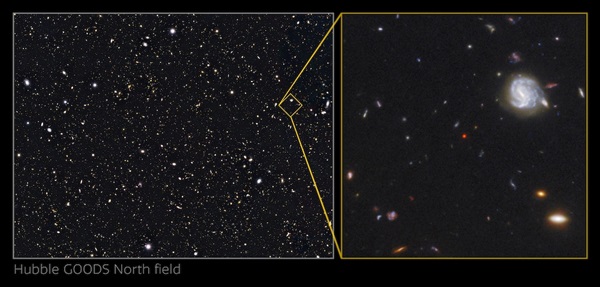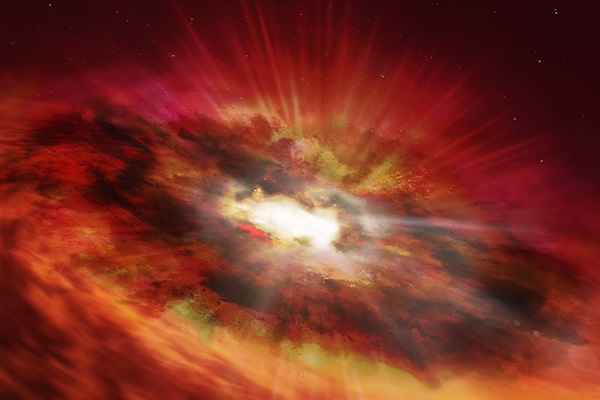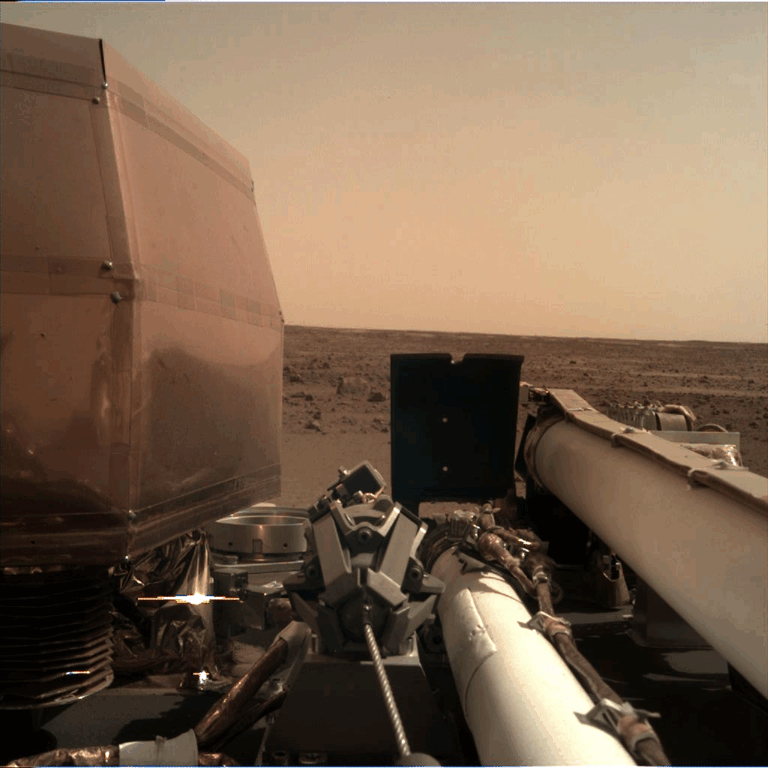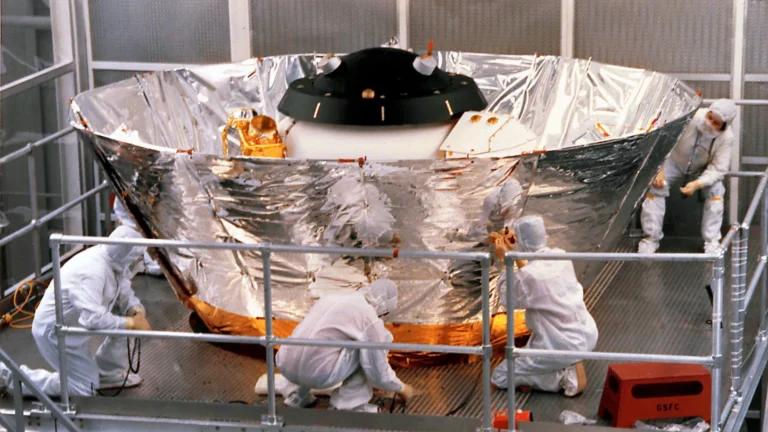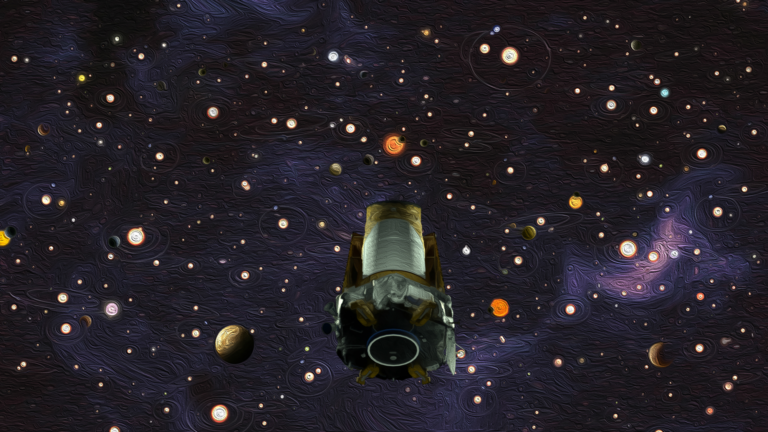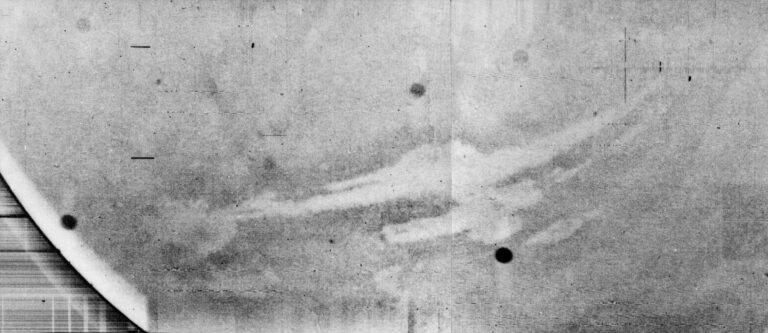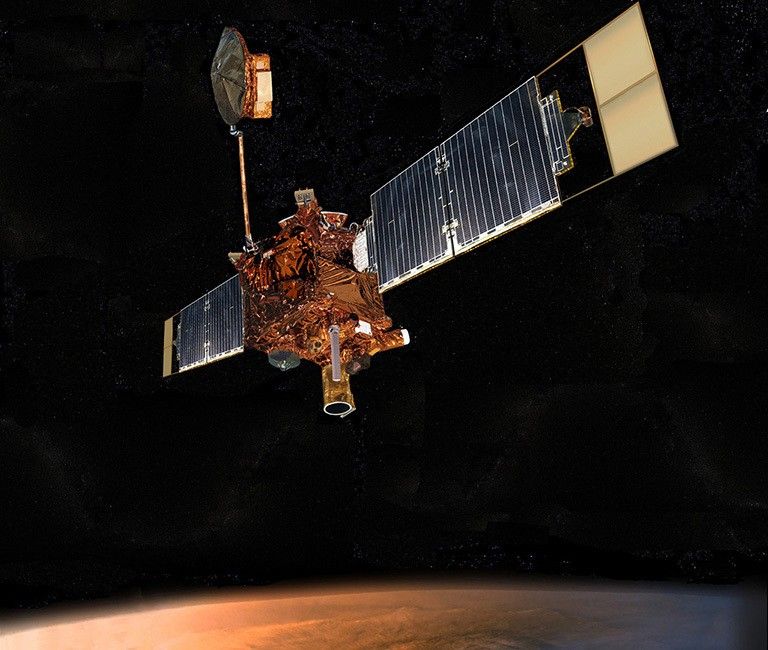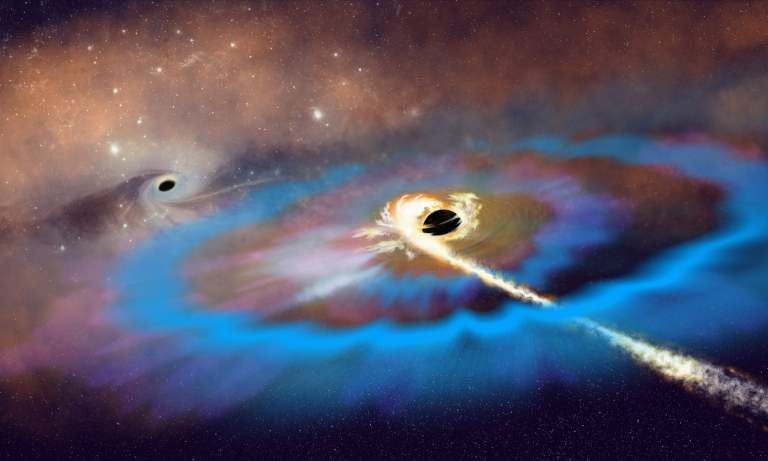Key Takeaways:
GNz7q (red dot) may be the evolutionary link researchers need to tie dusty starburst galaxies to quasars in the early universe.
Black holes, while prevalent in the spacefaring adventures of sci-fi, are a relatively new find for astronomers. Einstein first predicted them when he published his theory of general relativity in 1916. But these so-called “frozen stars” weren’t coined black holes until 1967. It took another five years for astronomers to actually discover the first black hole. And then another 48 years before scientists managed to capture the first image of a black hole.
It’s no wonder so much about these alluring monsters remains a mystery.
One of the biggest lingering conundrums is how supermassive black holes grew to be so large so fast in the early universe. Ranging from millions to billions of times the mass of the Sun, these titans reside in the heart of most galaxies. And, because there is a limit to how much material they can consume in a single sitting, it should take a really long time for them to devour enough to grow to such epic proportions. Yet, astronomers have spotted supermassive black holes less than a billion years after the Big Bang, leaving them scratching their heads.
Now, a new object, hidden within one of the best-studied areas of the night sky, may just hold the missing link to the evolution of black holes that scientists have been searching for.
Supermassive origins
While sifting through archival data from the Hubble Space Telescope, an international team of astronomers uncovered GNz7q. Lurking within the Great Observatories Origins Deep Survey-North (GOODS-N) field, the black hole existed only some 750 million years after the Big Bang. It sits at the core of a dusty galaxy exploding with star formation, also known as a starburst galaxy. The paper detailing the new find was published April 13 in Nature.
“GNz7q is a unique discovery that was found just at the center of a famous, well-studied sky field — showing that big discoveries can often be hidden just in front of you,” said Gabriel Brammer, an astronomer at the Niels Bohr Institute and co-author of the study, in a press release.
The discovery marks the first observation of a rapidly growing black hole in the early universe, something which, until now, had only been predicted by theories and simulations. Such rapidly growing black holes are thought to be an important link between supermassive black holes observed in dusty starburst galaxies and ultra-bright quasars. Among the most luminous objects in the cosmos, quasars are the result of supermassive black holes gorging on gas and dust. The infalling material produces ample radiation across the entire electromagnetic spectrum, emitting thousands of times more light than the entire Milky Way.
Theory predicts that supermassive black holes are born in the hearts of dusty starburst galaxies. And given enough time, they throw off the surrounding shroud of gas and dust to reveal themselves as extremely luminous quasars. Currently the inner portion of GNz7q’s accretion disk is obscured, with the outer part just beginning to reveal itself. If confirmed, that means GNz7q’s is passing through an important transitional stage of life that’s predicted by theoretical models.
“GNz7q provides a direct connection between these two rare populations and provides a new avenue towards understanding the rapid growth of supermassive black holes in the early days of the Universe,” said Seiji Fujimoto, lead author of the study. “Our discovery is a precursor of the supermassive black holes we observe at later epochs.”
New and old ground for JWST
Since GNz7q was found in one of the most thoroughly studied areas of the sky, scientists are hopeful that there are plenty more examples out there.
“It’s unlikely that discovering GNz7q within the relatively small GOODS-N survey area was just ‘dumb luck’ rather the prevalence of such sources may in fact be significantly higher than previously thought,” said Brammer.
Moving forward, the researchers are eager to use the James Webb Space Telescope (JWST) to more closely scrutinize the very early universe. That’s because the recently launched space telescope promises to be powerful enough to uncover plenty more of these objects, assuming they are as prevalent as this finding suggests.

